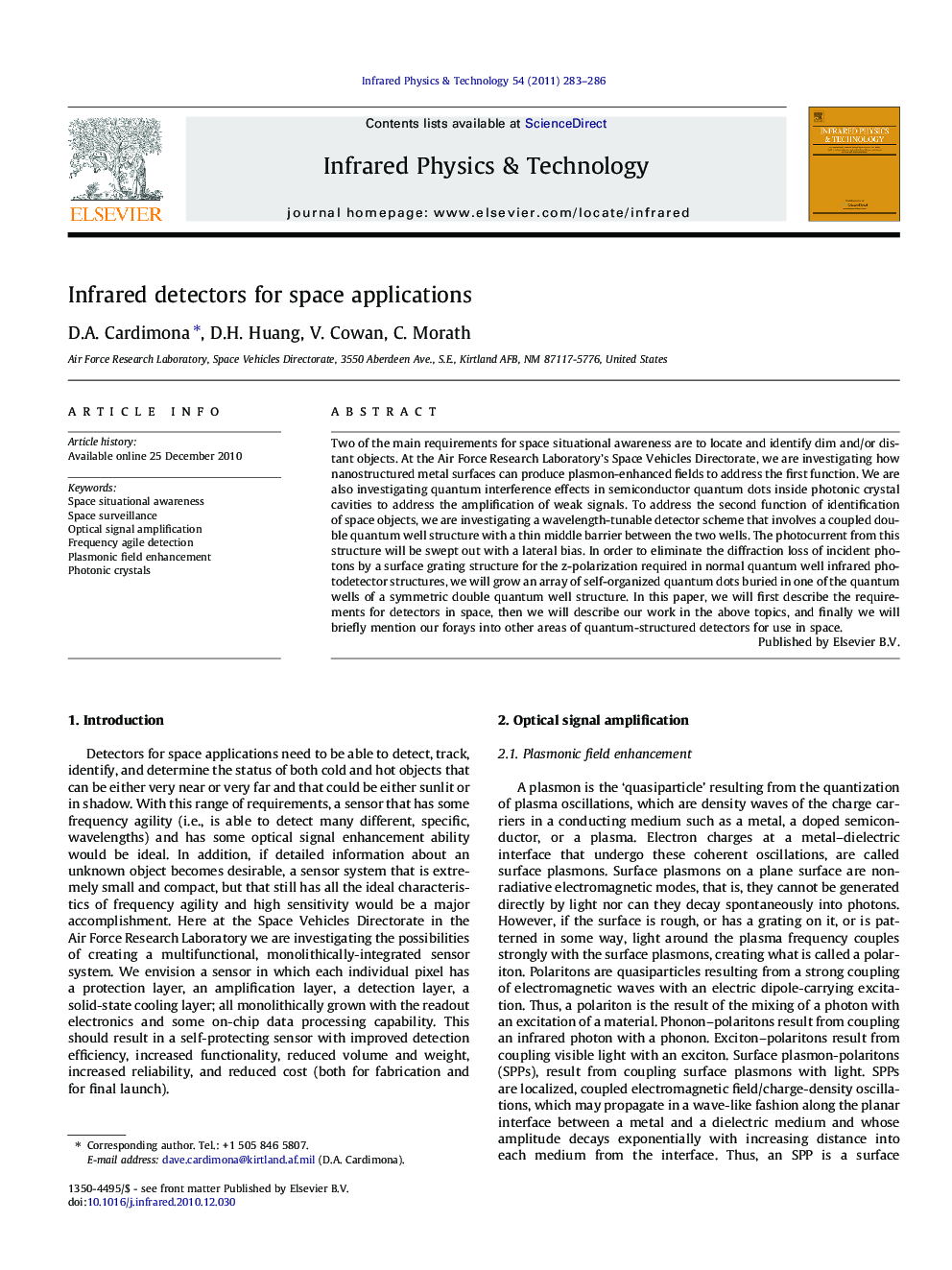| Article ID | Journal | Published Year | Pages | File Type |
|---|---|---|---|---|
| 1784744 | Infrared Physics & Technology | 2011 | 4 Pages |
Two of the main requirements for space situational awareness are to locate and identify dim and/or distant objects. At the Air Force Research Laboratory’s Space Vehicles Directorate, we are investigating how nanostructured metal surfaces can produce plasmon-enhanced fields to address the first function. We are also investigating quantum interference effects in semiconductor quantum dots inside photonic crystal cavities to address the amplification of weak signals. To address the second function of identification of space objects, we are investigating a wavelength-tunable detector scheme that involves a coupled double quantum well structure with a thin middle barrier between the two wells. The photocurrent from this structure will be swept out with a lateral bias. In order to eliminate the diffraction loss of incident photons by a surface grating structure for the z-polarization required in normal quantum well infrared photodetector structures, we will grow an array of self-organized quantum dots buried in one of the quantum wells of a symmetric double quantum well structure. In this paper, we will first describe the requirements for detectors in space, then we will describe our work in the above topics, and finally we will briefly mention our forays into other areas of quantum-structured detectors for use in space.
